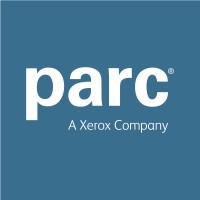Companies often turn to market research studies, focus groups, surveys, ethnographic studies, and other methods of gaining insight into people’s desires and needs. If you know people, you know your customers, know what buyers are more likely to adopt, and know what users want and how they act so you can differentiate your offerings from those of competitors.
While ethnography has become a catchall term for categorizing any and all methods of gaining insights into people, true ethnography reveals not just what people say they do, but what they actually do. Ethnography can thus provide a more complete, nuanced, and valid picture of people’s practices, processes, and product use in context.
It’s a powerful tool that can provide actionable insight and reduce corporate R&D risk.
PARC was a pioneer in hiring social scientists into corporate R&D and integrating them among its technological staff. However, the popular stories about the contributions of PARC’s social scientists have been overstated, and understated as well. In this article, we would like to set the record straight on the popular tale of ethnography at PARC, because the way the story unfolds reveals how powerful a tool ethnography can be.
The Legend
The popular story is that Lucy Suchman, one of PARC’s earliest social scientists, helped create the green button we see on copy machines today. The story goes more or less like this:
- PARC (Xerox PARC back then) hires an anthropologist. It was one of the first technology companies to bring in social scientists.
- Said anthropologist conducts an ethnographic study of office workers using copy machine – this was documented through video.
- “Man Against Machine” video shows office workers struggling to start their copy job.
- Engineers view video. A-ha moment! They invent the big green start button to help.
- Poof. Just like that, people can more easily use these machines. Man triumphs over machine.
The Reality, and Why You Should Care
Much of the above did actually happen:
- PARC hired the first of many anthropologists (and sociologists, psychologists, and so on); Lucy Suchman conducted an ethnographic study of copy machine use in the workplace. And she did make a video.
- BUT… She actually studied people using—or rather, failing to use—copy machines that already featured the big green buttons on them. (These machines were being advertised, ironically, as being easy to use).
So the ethnographic study didn’t actually generate the idea for the button. But what it did reveal is much more profound:
Suchman’s analysis showed that the concept that drove the design of the copier’s user interface–namely, that the machine could “know” what its users were trying to do based on sensory input and a predefined user model—was fundamentally flawed.
The video showed that rather than the machines understanding and responding to user behaviors, people (not the supposedly intelligent machine) were actually the ones trying to understand how the machine was going to respond to their actions. Drawing on ethnomethodology and conversation analysis, Suchman argued that underlying AI model of “plan” and then “act” is not really how people work.
Ultimately, what the machine sees/knows/is aware of is not the same as what the user sees/knows/is aware of. The trouble arises when “design” is unaware of that divergence.
Corporate Ethnography Today, and Some Takeaways
So now you know the story behind the story. If you’re interested in more, you can see Suchman’s book, Plans and Situated Actions, or its sequel, Human-Machine Reconfigurations, in which she tells the story in chapter one.
Suchman’s observations and approach were profoundly influential in helping inform the nuances of ethnography in technology innovation—not just at PARC, but across the whole field of human-computer interaction. (Among other honors, Suchman won ACM SIGCHI’s Lifetime Research Award in 2010.) Today, companies engage PARC for this expertise, which has continued to evolve at PARC and elsewhere.
There are a few takeaways to consider:
- While easy-to-use is a popular value for technologists, design houses, and UX professionals, it’s not so easy to do. Furthermore, ease of use in a laboratory is very different from ease of use in the context of one’s workplace or other settings, so consideration of context is key. Companies should contract ethnographic studies of work whenever possible, because they can yield much more pertinent insights into what a technology should and could do for users than isolated usability studies can.
- No matter how useful surveys, interviews, focus groups, and other methods are for gaining insight into people’s explicit desires or needs, direct observation is critical for revealing people’s underlying assumptions or tacit practices. Never dismiss the power and revelations behind what people don’t say.
- Video plays a critical role not only in capturing context, but in analyzing and sharing this context. At PARC, we have an entire lab space devoted to video data sessions where ethnographers join together to analyze recordings. More importantly, we often use video to help clients see what the trained ethnographers see, or to provide a different vantage point (e.g., an end-user’s perspective). Video is no longer as expensive as it used to be, so use it!
- Ethnography isn’t just watch-and-listen. It requires analysis and understanding. Furthermore, skilled ethnographers go beyond observation to tailor their recommendations to specific contexts and business problems, delivering value not just for users but for the company too. Be sure to hire skilled ethnographers.
We’d love to hear your thoughts in the comments as well!
Acknowledgements: Sonal Chokshi, Erik Vinkhuyzen, Victoria Bellotti, Brigitte Jordan.





